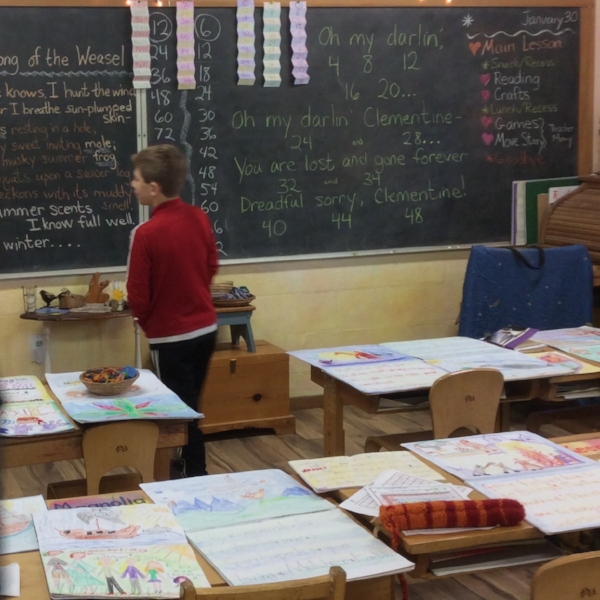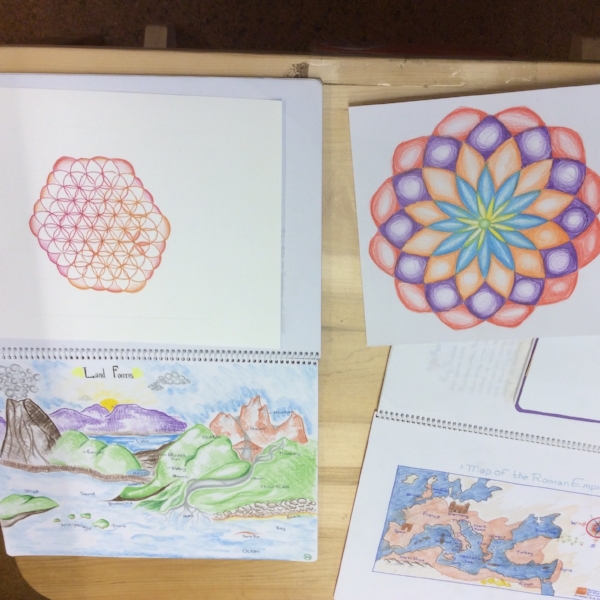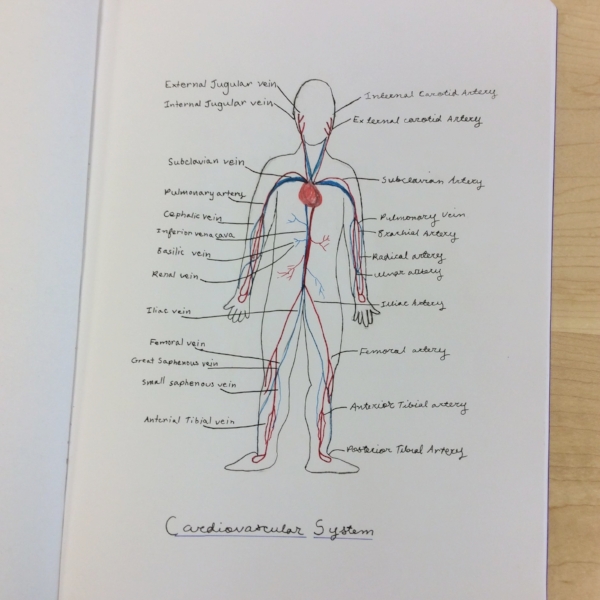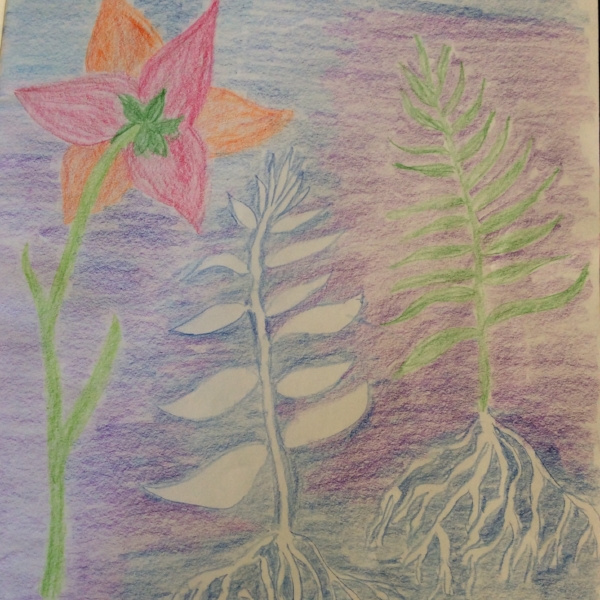It was fun to have so many families at our Open House this past Saturday! And, even though we do this every year, walking through the grades with all that beautiful work on display never gets old. Here are some images from the morning....
1st grade math processes illustrated, and presented in story form, with problems written out too (notice the mistake turned into a flower) ; the 2nd grade room with both math and language arts books, flute cases and poetry on the board.
3rd grade showed multiplication table review, liquid measurement studies and the start of their 'Shelters Around the World' block.
4th grade was full of neighborhood maps and animals and fractions.
One more 4th grade image -- a form drawing precursor the geometry to come in 5th grade. And, the 5th grade room with their Ancient Civilization and Botany books out, as well as a wall of recent watercolor paintings.
6th grade was full of geometry, geology and the Middle Ages.
7th and 8th grades showed off their books together, including drawing, Renaissance and revolutions studies, and human physiology.









































